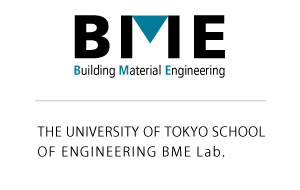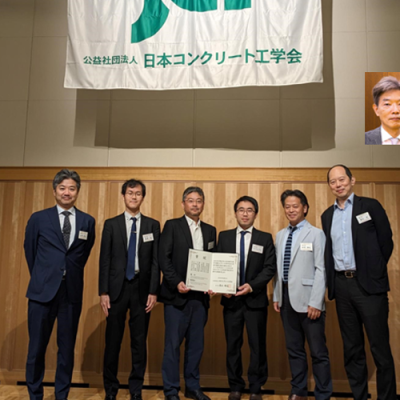Analysis of humidity dependence of carbonation reaction on hardened cement surface under atmospheric carbon dioxide concentration using infrared spectroscopy Naohiko Saeki, Ryo Kurihara, Ippei Maruyama https://doi.org/10.14250/cement.76.36
An understanding of carbonation reactions is necessary to accurately assess the amount of carbon dioxide fixed within cement structures. In this study, we investigated the carbonation reaction on the surface of hardened cement under atmospheric carbon dioxide concentration using infrared spectroscopy (FTIR) with humidity as a variable. By integrating the obtained peak intensities, we were able to semi-quantitatively analyze the changes in each component over time, and we were able to approximate the production rate of calcium carbonate and the decomposition rate of calcium hydroxide on the powder surface using an exponential function. . In addition, the deashing of the C-S-H gel and the polymerization reaction of silicate could be seen from the shift of the peak wave number. In addition, the humidity dependence of the precipitated phase of calcium carbonate was also clarified.
Study of carbonation reaction of cement paste in humid environment under different CO2 concentrations using Raman spectroscopy Ryusei Igami, So Goto, Ippei Maruyama https://doi.org/10.14250/cement.76.45
In this study, hardened cement was carbonated at 1% CO2 concentration and atmospheric concentration (approximately 0.04%) in a humid environment (95% RH), where the carbonation reaction of hardened cement progresses most, and Raman spectroscopy was used. We analyzed the differences in the progress of the carbonation reaction. Regarding the reaction rate of each cement hydrate, the reaction rate constant was calculated assuming a first-order reaction. As a result, the carbonation rate of C-S-H was higher in carbonation with a CO2 concentration of 1% at the very early stage of the carbonation process. On the other hand, the carbonation rate of calcium hydroxide and ettringite was greater at atmospheric concentrations. In addition, the pH of the pore solution in the cement hardened body changed due to the difference in CO2 concentration, and the precipitation of vaterite from ettringite was noticeable during carbonation under high pH atmospheric concentrations.
Consideration on drying shrinkage properties of hardened low-temperature Portland cement Miki Segawa, Aili Abudushalamu, Ippei Maruyama https://doi.org/10.14250/cement.76.153
In this study, in order to investigate the drying shrinkage properties of hardened low-temperature Portland cement, we measured changes in mass and length using ordinary Portland cement and low-temperature Portland cement. The mass change-length change relationship could be approximated by two lines, and the bending point roughly corresponded to 50%RH. From this gradient change, it was inferred that reversible strain occurred in the low-humidity region, and irreversible strain occurred in addition to reversible strain in the high-humidity region. The irreversible strain of L is larger than that of N, which is due to the large amount of C-S-H per unit volume, the difference in the amount of nitrogen adsorption, and the amount of calcium hydroxide, so there are fewer gel voids, and the structure created by C-S-H has many interlayer voids. It can be inferred that the state was more homogeneous, and this was thought to be because the layers were easily crosslinked after drying.
SIMULATION OF ANOMALOUS LIQUID WATER UPTAKE IN OPC MORTAR WITH DYNAMIC MICROSTRUCTURAL CHANGE MODEL Puttipong SRIMOOK, Ippei MARUYAMA https://doi.org/10.14250/cement.76.349
This study aims to develop the numerical method for the anomalous liquid water uptake on OPC mortar. The dynamic microstructural change diffusion model with the consideration of the saturation-dependent was proposed to represent the anomalous behavior. The microstructural change, an origin of anomalous behavior, was considered with the pore relaxation that reflects the rearrangement of C-S-H layers during the liquid water uptake process. An Interfacial transitional Zone (ITZ), which represents the impact of microcracks inevitably occurring in mortar and concrete, was included in the microstructure system. The good agreement of liquid water uptake characteristics (e.g., moisture distribution, penetration depth, and absorbed water amount) with the reference experiment shows the potential of the proposed method for an application on concrete.














